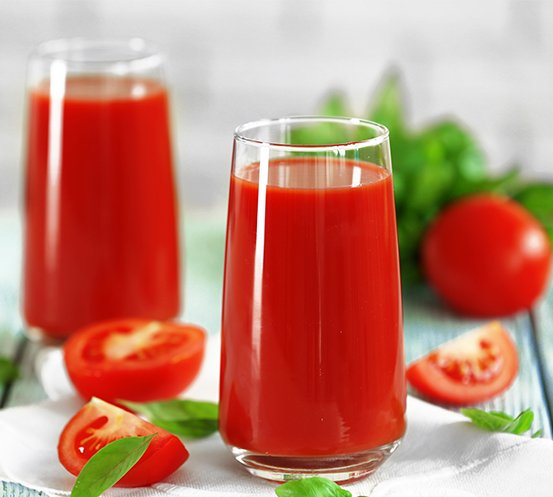ไฮโดรไดนามิกคาวิเทชัน: เทคโนโลยีการแปรรูปอาหารเหลวโดยไม่ใช้ความร้อน Hydrodynamic Cavitation: Non-thermal Technology for Liquid Food Production
5349 Views |

Translated and Compiled By: รวิพร พลพืช
Rawiporn Polpued
Senior Writer
Food Focus Thailand Magazine
editor@foodfocusthailand.com
ด้วยข้อจำกัดของกระบวนการแปรรูปโดยใช้ความร้อนที่ส่งผลกระทบต่อลักษณะปรากฏ และคุณค่าทางโภชนาการของอาหาร ส่งผลให้เกิดการพัฒนาเทคโนโลยี และการผสมผสานกระบวนการแปรรูปสมัยใหม่เข้าด้วยกัน เพื่อปรับปรุงคุณภาพของอาหารให้ดียิ่งขึ้น เช่น การฉายรังสี คลื่นไมโครเวฟ คลื่นอัลตราซาวด์การแปรรูปด้วยความดันสูง การใช้สนามไฟฟ้าแบบพัลส์ และกระบวนการพลาสมาเย็น เป็นต้น เนื่องจากผู้บริโภคต้องการผลิตภัณฑ์อาหารที่ผ่านกระบวนการแปรรูปน้อย แต่ยังมีความปลอดภัยต่อการบริโภค ดังนั้น ทางเลือกของกระบวนการแปรรูปอาหารโดยไม่ใช้ความร้อนที่เรียกว่า “ไฮโดรไดนามิกคาวิเทชัน” ซึ่งอาศัยปรากฏการณ์การก่อตัวและยุบตัวของโพรงอากาศในของเหลวจนเกิดเป็นคลื่นกระแทกที่มีแรงดันสูงนั้น จึงมีความเป็นไปได้ในการนำมาประยุกต์ใช้สำหรับแปรรูปอาหารเหลวในปัจจุบัน
กระบวนการไฮโดรไดนามิกคาวิเทชัน
กระบวนการไฮโดรไดนามิกคาวิเทชัน เป็นกระบวนการเกิดฟองอากาศที่มีการขยายตัว พร้อมกับการยุบตัวอย่างรวดเร็วและรุนแรง ส่งผลให้เกิดการปลดปล่อยความดันสูง ตั้งแต่ 100-1,000 บาร์ และความร้อนที่อุณหภูมิ 727-9,727 oC ออกมาภายในช่วงระยะเวลาสั้นๆ เพียงเสี้ยววินาที เทคโนโลยีนี้จัดเป็นกระบวนการแปรรูปอาหารโดยไม่ใช้ความร้อนที่มีประสิทธิภาพในการทำลายเชื้อจุลินทรีย์ ลดกิจกรรมของเอนไซม์ แต่ยังคงรักษาคุณค่าทางโภชนาการของอาหารไว้ได้ โดยวิธีการสร้างฟองอากาศหรือโพรงอากาศ สามารถทำได้โดยการใช้อุปกรณ์จำกัดการไหล ซึ่งมีลักษณะเป็นแผ่นโลหะที่มีช่องเปิดวงกลมอยู่ตรงกลางเพื่อให้ของเหลวไหลผ่าน เมื่อของเหลวไหลผ่านอุปกรณ์นี้จะทำให้เกิดความเร็วและพลังงานจลน์เพิ่มขึ้น ในขณะที่ความดันจะลดลง เนื่องจากผลของแรงเสียดทานและความต้านทานการไหล เมื่อความดันลดลงต่ำกว่าความดันไอของของเหลว จะทำให้เกิดการก่อตัวของฟองอากาศมากขึ้นอย่างต่อเนื่อง และเริ่มเกิดการยุบตัว ส่งผลให้เกิดเป็นคลื่นความถี่หรือคลื่นกระแทกขนาดเล็ก พร้อมกับการปลดปล่อยพลังงานออกมาบริเวณโดยรอบของของเหลว ซึ่งสูงถึง 1,018 กิโลวัตต์ต่อลูกบาศก์เมตร
The novel technology and the combination of modern processing were developed to improve the quality of food products such as radiation, microwave, ultrasound waves, high-pressure processing, pulse electric field, and cold plasma process due to the limitation of heat treatment that certainly impacts the appearance and nutritional value. Recently, consumers have paid more attention to minimally processed food but are still concerned about safer consumption. Therefore, the alternative non-thermal food processing as "hydrodynamic cavitation", which relies on the formation and collapse of air bubbles under the liquid to create a high-pressure shock wave, is possible to apply in liquid food processing.
Hydrodynamic cavitation
Hydrodynamic cavitation is a formation of bubbles together with rapid and severe collapse phenomena which result in the release of high pressure ranging from 100-1,000 bar and heat at a temperature of 727-9,727 oC in a shorter time. This technology is classified as a non-thermal food processing that can effectively destroy microorganisms and reduce enzyme activity but maintains the nutritional properties of the food product. A method to generate air bubbles can be achieved by using a flow constriction device. This equipment is made from a metal disc and contains a circular opening in the center to allow liquid movement. As the liquid passes through this device, the velocity and kinetic energy will increase while the pressure is dropped because of the effect of friction and flow resistance. When the pressure drops below the liquid's vapor pressure, it will cause more bubbles formation and collapse continuously. So, numerous small shock waves were created and released energy in the surrounding liquid up to 1,018 kW/m3.






